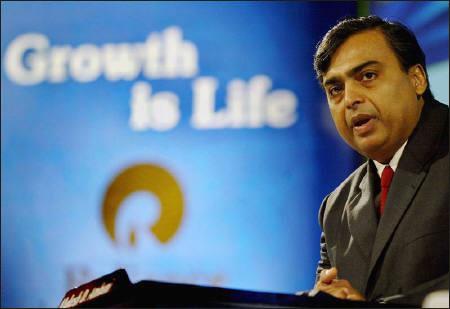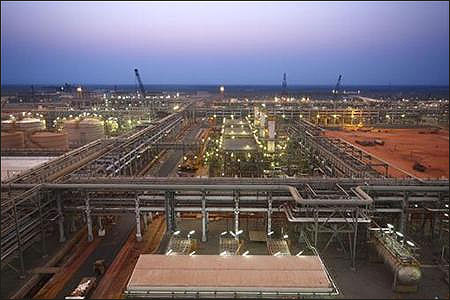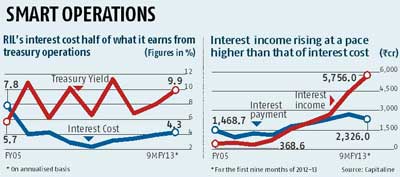 | « Back to article | Print this article |
RIL's growth takes wings
The treasury department of Reliance Industries Ltd beats the country's best-run banks in interest rate spreads.
At a time when the company's margins in the core refining and petrochemicals business are down, its treasury income has helped juice up its earnings.
Click NEXT to read further. . .
RIL's growth takes wings on surge in treasury income
For the first nine months of 2012-13, RIL reported 'other income' of Rs 5,756 crore (Rs 57.56 billion) -- nearly two-and-a-half times its interest payment of Rs 2,326 during the period (see chart on slide 7).
This translates into an interest rate spread of 566 basis points between its average borrowing cost and the yield on its cash & equivalents.
The spread is much wider than those of India's top private-sector banks in the same period.
HDFC Bank, for example, reported a net interest margin of 410 bps.
Click NEXT to read further. . .
RIL's growth takes wings on surge in treasury income
However, RIL's treasury operations could not be directly compared with banks', as companies, unlike lenders, are free to park their funds in any non-speculative financial asset.
Banks, on the other hand, have to abide by regulatory restrictions, such as the statutory liquidity ratio, cash reserve ratio, priority-sector lending, etc, which cap their interest spreads.
As of December-end, the energy and petrochemicals major was sitting on cash and equivalents of Rs 80,962 crore (Rs 809.62 billion), while its gross borrowings were to the tune of Rs 72,266 crore (Rs 722.66 billion).
Click NEXT to read further. . .
RIL's growth takes wings on surge in treasury income
It deployed its cash in bank deposits, certificates of deposit, mutual funds and government securities and bonds.
Experts attribute this to RIL's ability to raise foreign loans at very low interest rates. "RIL is the only Indian company with an international rating higher than India's sovereign rating.
"This enables it to raise capital at rates lower than other business entities," says an analyst.
S&P's current rating of the company's international debt, of BBB, is a notch higher than the government of India's debt.
Forex loans constitute a majority of RIL's debt.
Click NEXT to read further. . .
RIL's growth takes wings on surge in treasury income
Though this makes the company highly competitive, the rapid growth in its interest income and cash balances in recent years has prompted many analysts to ask RIL if it is using its balance sheet to do interest rate arbitrage.
"The company never acknowledged it but its treasury operations amount to interest rate arbitrage between India and the international market," says the oil and gas analyst of a Mumbai-based brokerage.
The company has raised around Rs 8,200 crore (Rs 82 billion), including $800 million (about Rs 4,300 crore) through 5.875 per cent perpetual bonds, so far this financial year.
RIL denies this, saying the rise in cash balance is due to strong internal accruals and proceeds from stake sale in oil & gas blocks to BP in 2011.
Click NEXT to read further. . .
RIL's growth takes wings on surge in treasury income
"A good chunk of the cash will be used to fund the equity portion of the $18-billion capex planned for the next three-five years.
"Besides, there are repayments in excess of $7 billion due over the next three years," says an RIL spokesperson.
Many analysts are, however, worried at the rising share of interest income in RIL's earnings -- nearly a fifth of operating profit in the first nine months of 2012-13.
This rose from 11 per cent in 2011-12 and 6.4 per cent the previous year.
"Too much cash on the books has depressed RIL's return on equity and played a part in the stock's weak performance on the bourses in last few years.
Click NEXT to read further. . .
RIL's growth takes wings on surge in treasury income
"The management should either use the cash to grow its core business or return it to shareholders as higher dividends," says the research head of a Mumbai brokerage.
He is bang on target.
Over the past five years, RIL's return on equity has nearly halved -- from 21.6 per cent in 2007-08 to 12.5 per cent in the first nine months of this financial year.
The company, however, sees the cash pile as offering it flexibility to exploit large inorganic opportunities and acting as a hedge against macroeconomic uncertainty.







